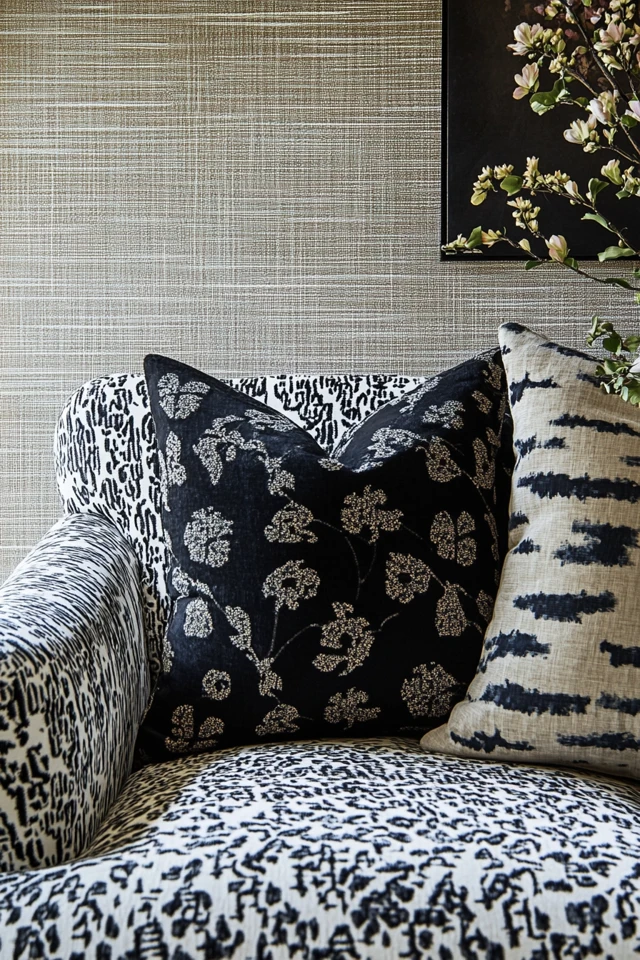Introduction
I’ll never forget the first time I fully appreciated the transformative power of patterns in a room. It was during a semester abroad in Italy, where every café, museum, and even modest apartment seemed to hum with visual rhythm. One particular moment sticks in my mind: stepping into a centuries-old villa in Florence and being greeted by hand-painted tiles on the floor, intricate frescoes on the ceiling, and patterned upholstery that felt like it had stories to tell. I remember thinking, “Why don’t we use patterns like this at home?” This fascination with patterns became a cornerstone of my design philosophy and a subject I return to again and again in my projects.
Patterns aren’t just “visual fillers”; they’re a language. They have the power to evoke emotions, influence how a space feels, and even change the perceived dimensions of a room. They can be bold and commanding or subtle and soothing. Patterns tell stories, and when incorporated thoughtfully into interior design, they bring a room to life in ways that flat, solid colors never could. Whether it’s a Persian rug anchoring a living room, geometric wallpaper adding modern flair, or floral textiles creating a sense of nostalgia, patterns are essential to making a space truly feel alive.
Over the years, I’ve learned to work with patterns in ways that enhance rather than overwhelm a space. Whether it’s layering textures and motifs for depth or using one strong pattern as a focal point, the key lies in balance. In this blog, I’ll unpack the art and science behind using patterns in aesthetic room design. From understanding color harmony to tips for mixing patterns, I’ll share actionable insights that you can use to make your spaces not only beautiful but also deeply personal.
So, why do patterns play such a significant role in design, and how can you use them to transform your rooms? Let’s dive in!
Understanding the Basics of Patterns
What Are Patterns in Interior Design?
In the simplest terms, patterns are repeated decorative designs that add visual interest to a surface. They can be geometric, organic, abstract, or representational, and they appear in everything from textiles and wallpapers to flooring and decorative accents. Patterns can be intricate, like a damask wallpaper, or minimalistic, like a simple striped rug.
Patterns not only bring movement and energy to a space but also help convey a specific mood or style. For instance:
- Floral patterns evoke romance and nostalgia.
- Geometric designs bring a sense of order and modernity.
- Animal prints add a bold, playful edge.
The Psychology of Patterns
Patterns influence how we perceive and interact with a space. Here’s how:
- Dynamic patterns (zigzags, chevrons, and geometrics) can create a sense of energy and movement. These work beautifully in active spaces like home offices or playrooms.
- Soft, organic patterns (like florals or water-inspired motifs) have a calming effect, making them ideal for bedrooms and bathrooms.
- Repetitive patterns lend a sense of stability and rhythm, grounding a space and making it feel cohesive.
The Role of Color in Patterns
Patterns are rarely just about their design; their color palette plays an equally significant role. A vibrant, multicolored pattern can be the star of a room, while a tone-on-tone pattern can provide subtle texture. When working with patterns, always consider how their colors interact with the rest of your space to create harmony or contrast.
How to Incorporate Patterns into a Room
Start Small: The Power of Accents
If you’re new to working with patterns, start with small accents like throw pillows, curtains, or even lampshades. These are low-commitment ways to experiment and figure out what works for your style. For instance, a couple of patterned pillows on a solid-colored sofa can add dimension and personality.
Choose a Focal Point
A common mistake is overloading a room with patterns, which can feel chaotic. Instead, pick one patterned element to serve as the focal point, whether it’s a bold area rug, a feature wall, or a statement piece of furniture. Let this pattern shine while keeping other elements more subdued.
Layering Patterns Like a Pro
Layering patterns might sound daunting, but when done right, it can add incredible depth to a space. Here are a few tips:
- Stick to a color palette: Choose patterns that share at least one common color to tie them together.
- Vary scale: Combine small, medium, and large-scale patterns to create balance. For example, pair a large floral print with a smaller geometric pattern.
- Mix types: Combine different styles, such as an organic floral with a structured stripe, to keep things interesting.
Patterns in Different Design Styles
Modern Minimalism
Patterns in minimalist spaces are typically understated and geometric. Think black-and-white herringbone tiles, soft pinstripes, or tone-on-tone patterns in neutral shades.
Bohemian Vibes
Boho spaces thrive on eclectic, layered patterns. Moroccan rugs, tribal prints, and floral motifs in rich, earthy tones are perfect for creating that collected-over-time look.
Traditional Elegance
Classic spaces benefit from timeless patterns like damasks, paisleys, and chinoiserie. Use these on wallpaper, curtains, or upholstery to evoke sophistication.
Scandinavian Simplicity
Scandi spaces use patterns sparingly, focusing on clean lines and natural textures. Subtle stripes or geometric patterns in muted colors are common.
Picture Gallery
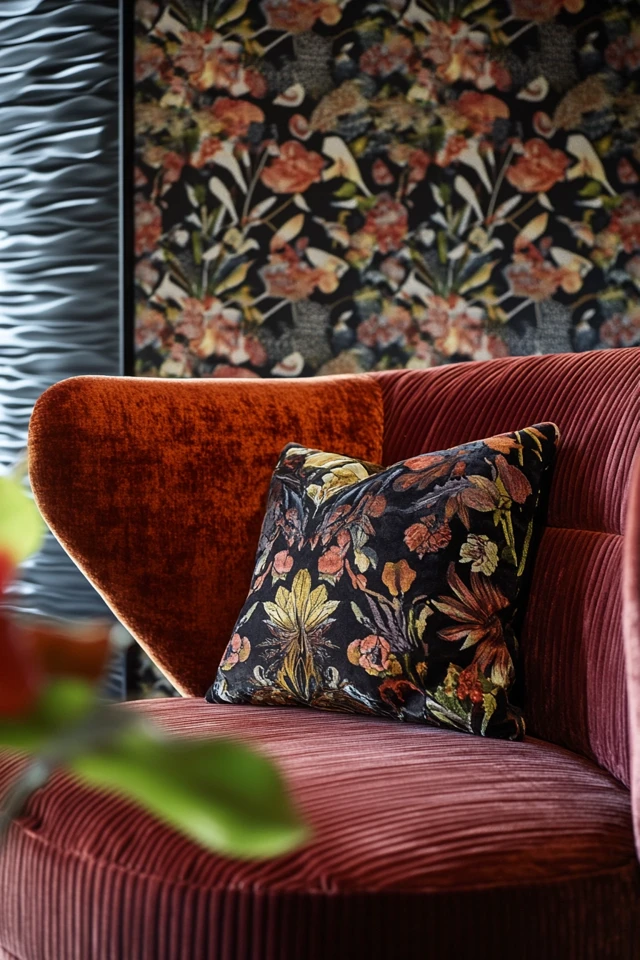
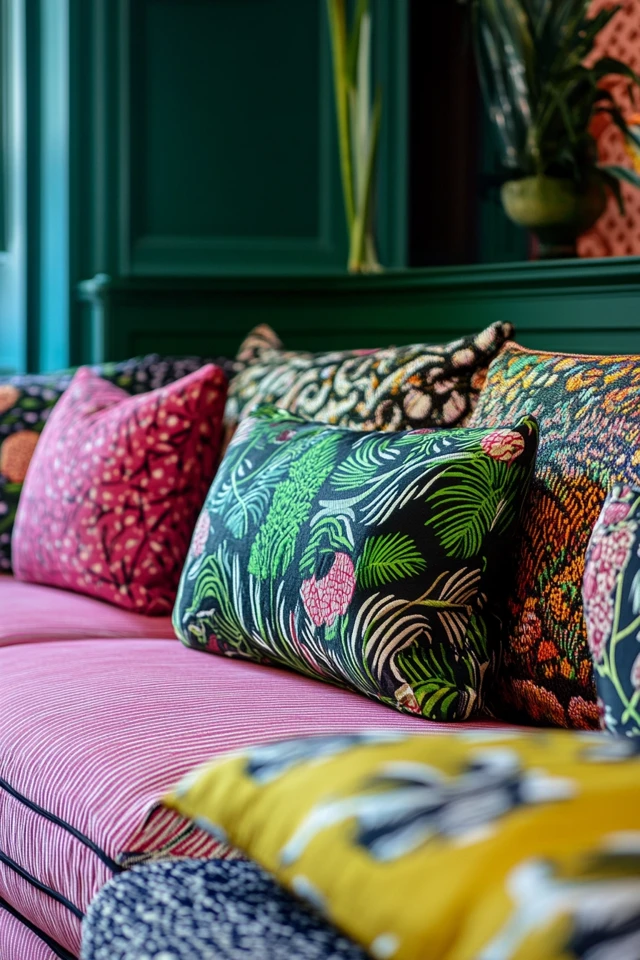
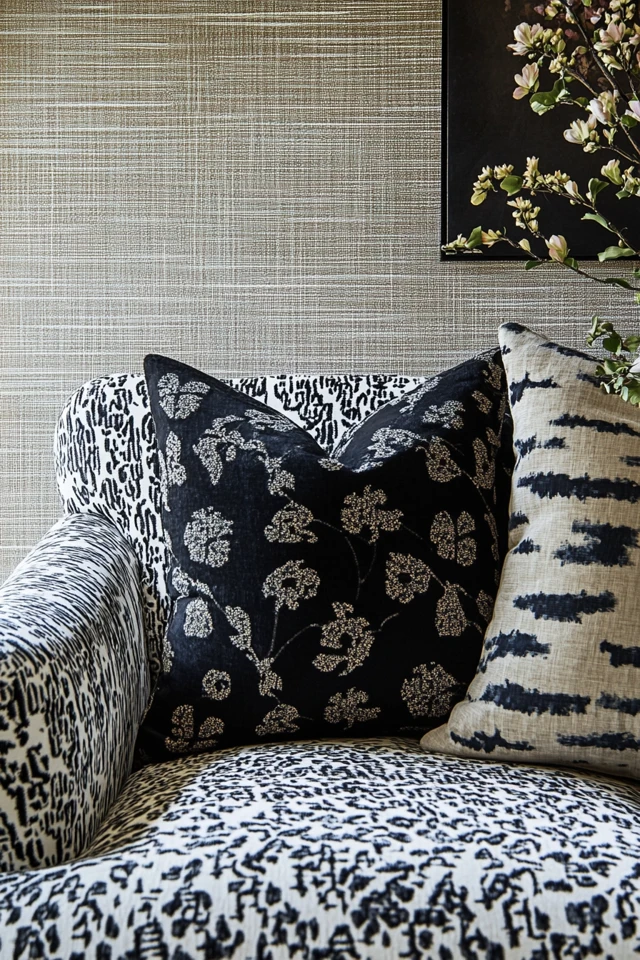
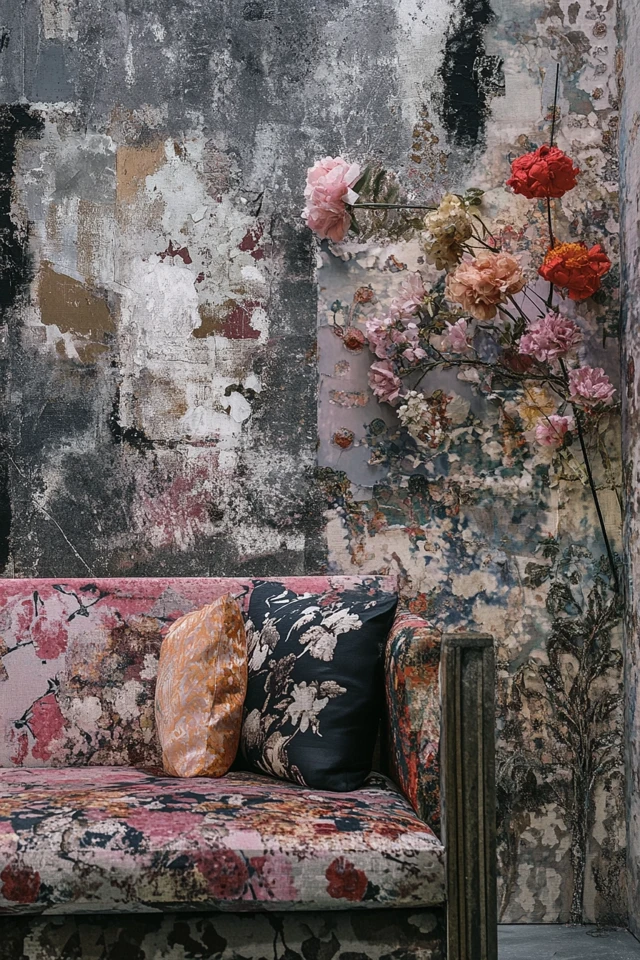
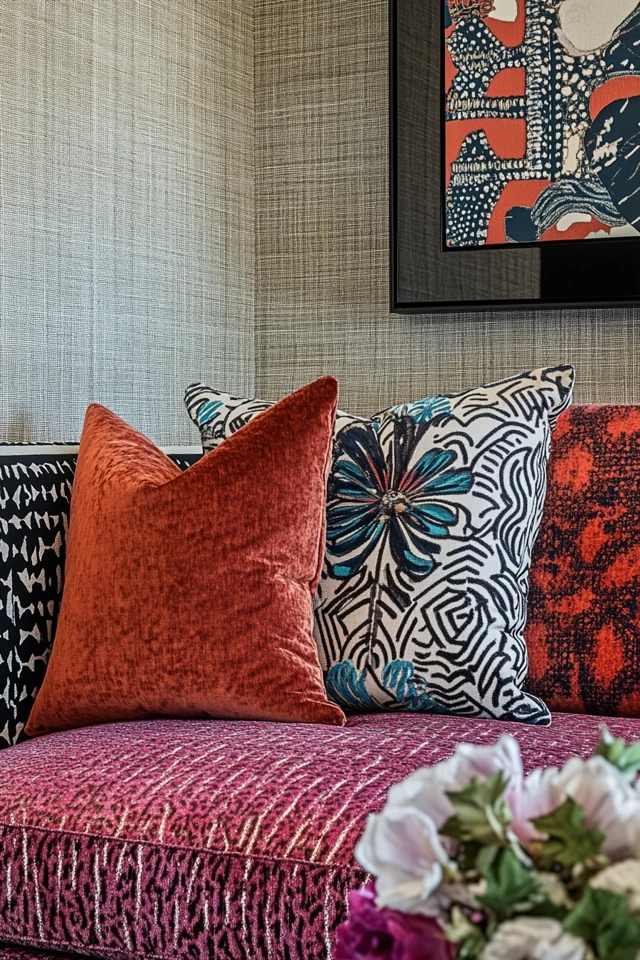
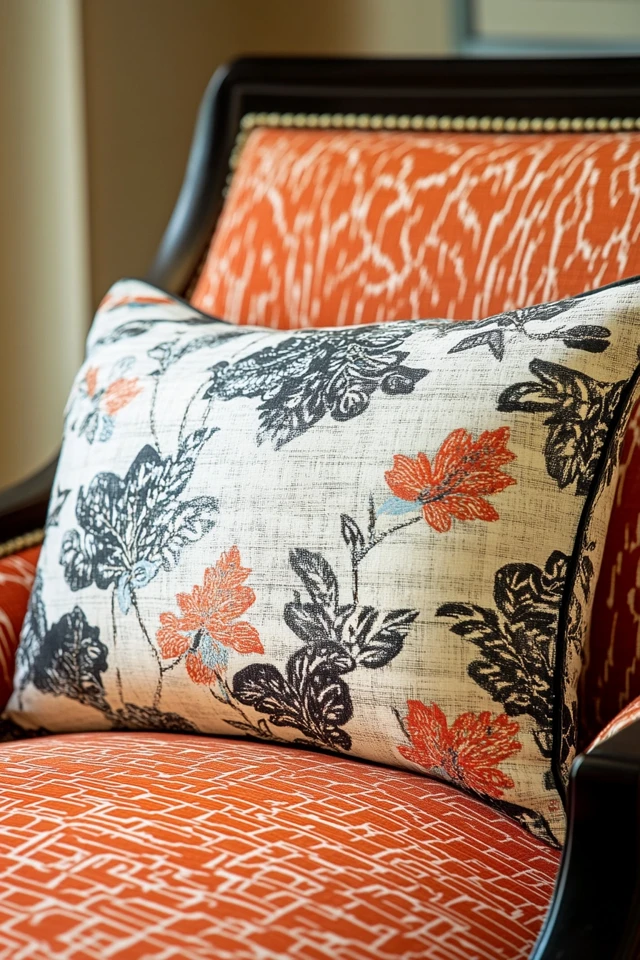
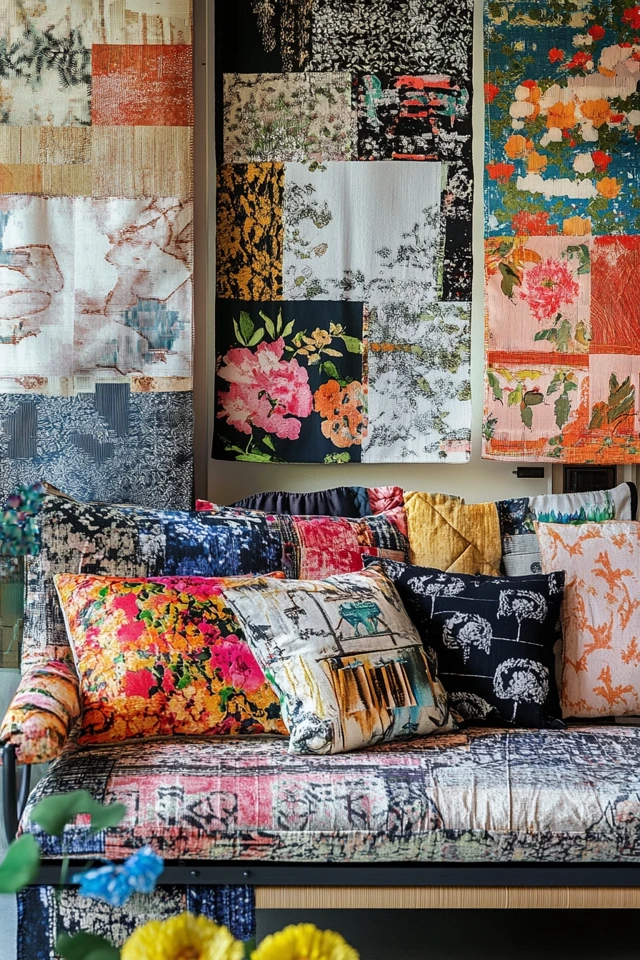
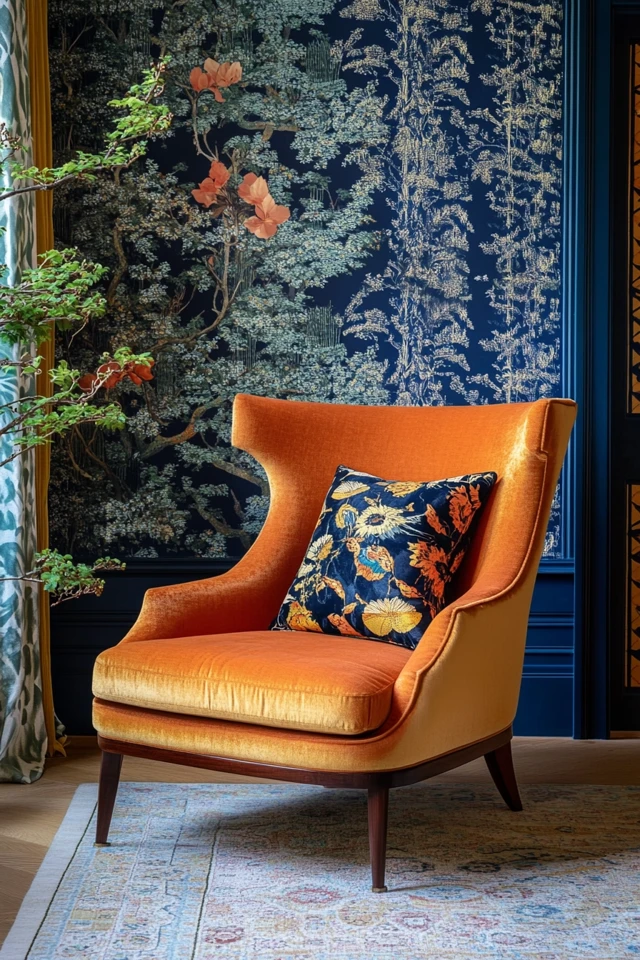
Patterns and Room Functionality
Living Rooms
Living rooms are perfect for experimenting with patterns. A patterned area rug can ground the space, while patterned curtains or accent chairs add layers of interest.
Bedrooms
For a serene bedroom, opt for soft, organic patterns in muted tones on bedding or wallpaper. If you want to add a touch of drama, a patterned headboard can become the star of the room.
Kitchens
In kitchens, patterns often appear on backsplashes, tiles, or dishware. Geometric or subway tile patterns can bring a sense of structure, while vintage floral tiles add charm.
Bathrooms
Bold patterns in bathrooms are a rising trend, often showcased through statement tiles or patterned wallpaper. A dramatic black-and-white floor tile, for instance, can elevate the space.
Conclusion
When I think back to that villa in Florence, I realize the patterns weren’t just decorations—they were storytellers. They told tales of the people who lived there, their traditions, and their artistry. And that’s what patterns can do for your home too. Whether you’re going for bold and daring or soft and subtle, incorporating patterns is a way to bring personality, texture, and depth into any room.
The beauty of patterns lies in their versatility. They can transform a plain, lifeless room into a vibrant, energetic space or a calm, serene retreat. The key is to use them thoughtfully, balancing scale, color, and style to create harmony.
So go ahead, take that leap. Experiment with a geometric rug, hang a patterned tapestry, or even try your hand at layering different motifs. Patterns have the power to transform not just your spaces but the way you feel in them. Let them tell your story.
FAQ
What are some beginner-friendly ways to use patterns in a room?
Start small with throw pillows, rugs, or curtains. Choose one patterned element to serve as a focal point and keep the rest of the room neutral to avoid overwhelming the space.
How do I mix and match different patterns?
Stick to a cohesive color palette, vary the scale of the patterns, and mix different types (e.g., florals with stripes) for balance. Avoid combining too many bold patterns in one space.
Can I use patterns in small rooms?
Absolutely! In fact, strategic use of patterns can make a small room feel larger. Opt for vertical stripes to elongate walls or a large-scale pattern to create a sense of openness.
What are some timeless patterns I can invest in?
Timeless patterns include stripes, florals, herringbone, damask, and geometric motifs. These designs have stood the test of time and work across various styles.
How do patterns affect the mood of a room?
Patterns can evoke different emotions based on their style and color. Dynamic patterns like chevrons energize a space, while soft, organic designs like florals create a calming effect.

